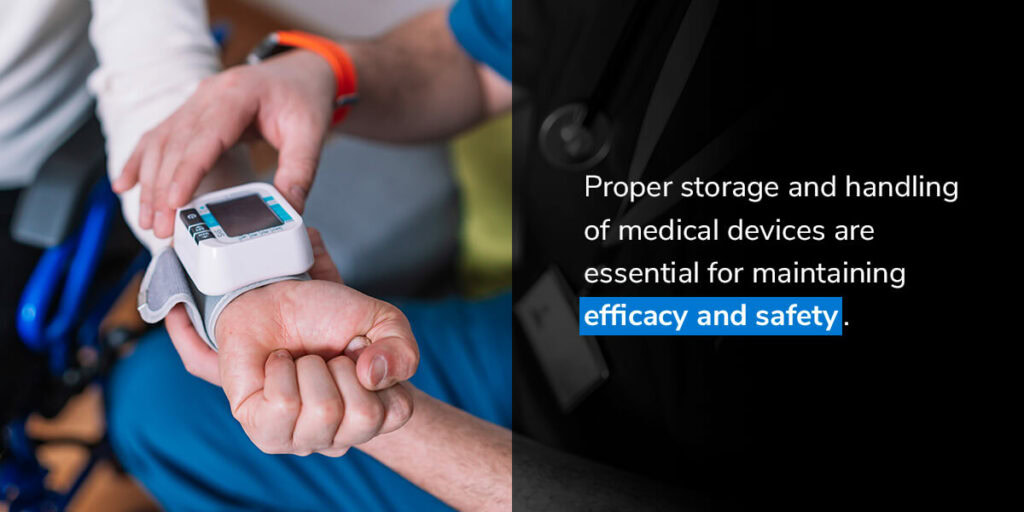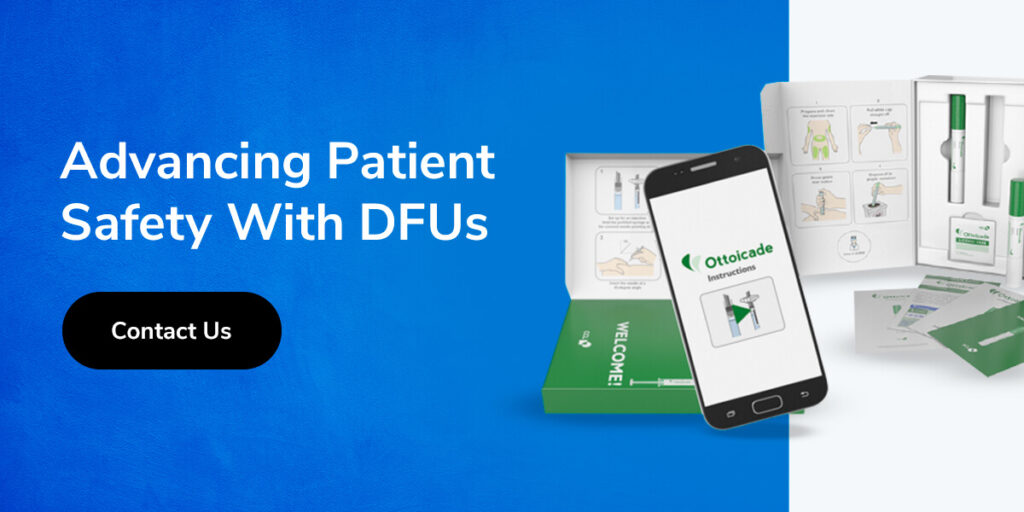Guidelines for Directions for Use (DFU)

DFU guidelines are similar to Instructions for Use (IFU) but specifically pertain to medical devices. DFUs are essential documents that accompany medical devices, providing crucial information to healthcare professionals and patients on how to use the devices safely and effectively.
The United States Food and Drug Administration (FDA) helps regulate medical devices and establish the standards for DFUs. It provides specific guidance on the content, format and presentation of DFUs to ensure the information provided is clear, accurate and accessible to the user.
Requirements for Instructions for Use of Medical Devices
The FDA has set specific regulatory requirements for instructions for use of medical devices. These requirements are designed to ensure all necessary information is included and presented in a manner that facilitates safe and effective use of the device. These guidelines include:
- Use simple and clear language: DFUs should be written in plain language that is easy to understand. Technical terms should be defined, and medical jargon should be avoided.
- Provide clear and concise instructions: DFUs should provide step-by-step instructions that are easy to follow. They should be succinct and avoid unnecessary information.
- Use graphics and illustrations: Graphics and illustrations can help clarify complex instructions and make the DFU more accessible to users.
- Use appropriate formatting: DFUs should be formatted in a way that is easy to read and understand. Important information should be highlighted, and the text should be organized logically.
- Provide translations: DFUs should be translated into languages other than English if the device is intended for use in non-English speaking countries.
- Ensure accuracy and consistency: DFUs should be accurate, consistent and up to date. Any changes to the device or its use should be reflected in the DFU.
Key elements that must be addressed in DFUs for medical devices include:
- Device description
- Indications for use
- Contraindications
- Warnings and precautions
- Instructions for use
- Maintenance and cleaning instructions
- Storage and handling guidelines
- Troubleshooting advice
- Disposal guidance
Label Design
Label design is a vital component of DFUs for medical devices. The label must be clear and legible, containing all necessary information while adhering to regulatory standards. Effective label design ensures all critical information is easily accessible, reducing the risk of user error and enhancing patient safety. DFUs on labels should be concise yet comprehensive, guiding users through the proper device use.
Dosage Instructions
Clear and precise dosage instructions are essential for medical devices that involve drug delivery or require specific dosage adjustments. DFUs should:
- Provide clear guidelines for determining the correct dosage.
- Include instructions for adjusting dosage based on patient characteristics.
- Explain how to administer the correct dosage using the device.
- Highlight potential risks associated with incorrect dosage.
Accurate dosage instructions are particularly important for devices used in home settings, where patients may not have immediate access to healthcare professionals.
Storage and Handling Guidelines

Proper storage and handling of medical devices are essential for maintaining efficacy and safety. DFUs should include recommended storage temperatures and conditions and guidelines for safe handling and transportation. They should also have instructions for preparing the device for use and information on shelf life and expiration dates. These guidelines help ensure the device remains in optimal condition throughout its life cycle.
Safety Warnings
Safety warnings are a necessary part of DFUs, helping prevent potential harm to users and patients. Best practices for communicating safety warnings include:
- Using clear, concise language.
- Highlighting warnings visually.
- Providing specific instructions on how to avoid or mitigate risks.
- Including information on potential side effects or adverse reactions.
- Highlighting potential contraindications.
Sufficient safety warnings can significantly reduce the risk of adverse events and improve patient outcomes.
Patient Information Leaflets
Patient information leaflets are essential for devices intended for home use. They should be written in plain, easy-to-understand language, include clear instructions for using the medical device and provide information on side effects.
These leaflets should ideally be available in multiple languages, provide information on when to seek medical help and offer troubleshooting advice. Well-designed information leaflets can empower patients to use medical devices correctly and confidently, improving treatment adherence and outcomes.
Best Practices for Developing DFUs
Developing effective DFUs requires a comprehensive approach that considers the needs of all potential users. Collaboration with healthcare professionals is crucial. They can offer clinical perspectives, insights into common user errors or misunderstandings and feedback on the clarity and completeness of instructions. Healthcare professionals can also give suggestions for improving safety warnings and precautions, enhancing the quality and effectiveness of DFUs.
Another critical practice for developing effective DFUs is user testing. Methods for testing with end users include:
- Usability testing sessions where users interact with the device and its instructions.
- Surveys and questionnaires to gather user feedback.
- Observational studies in clinical settings.
- Focus groups to discuss and refine instructional content.
Other best practices include regularly reviewing and updating DFUs based on user feedback and new research and ensuring consistency across all product documentation.
Advancing Patient Safety With DFUs
Guidelines for DFUs ensure the safe and effective use of medical devices. By following FDA guidelines and industry best practices, manufacturers can create DFUs that are clear, comprehensive and user-friendly. Developing effective DFUs requires ongoing collaboration with healthcare providers and end users to ensure the information meets their needs and enhances patient safety.
At CCL Healthcare, we understand the critical importance of high-quality DFUs in the pharmaceutical industry. Our extensive experience in medical device packaging and our commitment to patient safety and regulatory compliance make us an ideal partner for your labeling needs.
Explore our comprehensive labeling solutions and patient information leaflets to enhance your medical device packaging.
